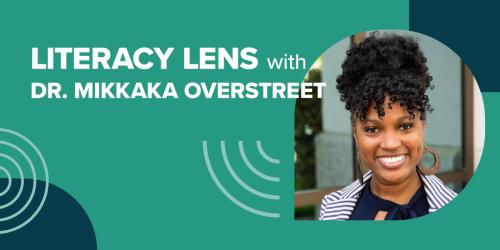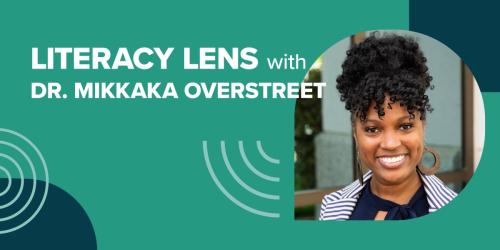Literacy Lens: Improving Literacy Rates for Women and Girls

This Women’s History Month, I’m thinking about the education of girls and women. Although 49 to 51 percent of the world’s population is female (the data on sex ratio at birth is fascinating), women still do not have equal access and outcomes in areas of education, health, economics, and more. The disparities are even starker when race and other demographics are considered. These discrepancies impact society in multiple and complex ways.
For example, despite having higher levels of education than their male counterparts, women make, on average, 83 cents for every dollar men earn. However, Black women earn only 64 cents and Latinx women only 57 cents for every dollar compared to white men. This gap widens as women age. Since domestic and care work disproportionately falls to women, only 47 percent of working age women in the world work outside the home, and many work in lower-paying sectors. Globally, women account for only 28 percent of managerial positions and 7.4 percent of Fortune 500 CEOs.
This wage gap negatively impacts women, families, and the economy. It means women will have less money at retirement and are more likely to live in poverty when they grow old. Families with working mothers rely on them for about 40 percent of household earnings—a number that skyrockets to 89 percent for families in the bottom 20 percent economically.
Considering that the size of the labor force is dependent on workers, the economy suffers from the underpaid labor of women. As a matter of fact, “the American economy is $2.0 trillion larger today than it would have been if women had not increased their participation and hours in the labor force since 1970, according to an estimate by the Council of Economic Advisers.”
As an educator, I can’t help but think how much of the disparity in women’s health and financial stability might be mitigated by education. For example, while women make up about half of the global population, they account for two-thirds of the population of illiterate adults. Low literacy levels limit their opportunities and negatively impact their health and the health of their children.
The Impacts of Gender Inequities in Literacy
According to the National Institutes of Health, a mother’s reading skill is the greatest determinant of a child’s future academic achievement. The second most impactful factor is neighborhood income level. Thus, a child living in a low-income neighborhood with a mother who has low literacy levels and is making 83, 64, or 57 cents on the dollar compared to men is significantly less likely to succeed academically. This, in turn, continues to feed a negative cycle of educational and income disparity.
Literate women are also more health literate and are consequently able to counteract some root causes of maternal and childhood morbidity and mortality. UNESCO explains that maternal literacy correlates with better health outcomes for women and their children, reduced child mortality, greater enrollment of children in school, and reduced poverty at the family and household level. The Society for Women’s Health Research cites health literacy as “a crucial factor in a woman’s self-care and self-efficacy” and calls for more attention and research to “the relationship between maternal health outcomes and health literacy.”
Navigating women’s health in the U.S. is a disaster I’ve experienced firsthand. The U.S. ranked 11 out of 11 in a recent study of women’s health and health care. Researchers noted: “[Women in the U.S.] have the greatest burden of chronic illness, highest rates of skipping needed health care because of cost, difficulty affording their health care, and are least satisfied with their care.” Twenty percent of women in the U.S. have two or more chronic illnesses. Further, according to The American College of Physicians, we have the highest maternal mortality rate among “developed” countries, and we’re the only “developed” nation where that rate continues to increase. Additionally, there is a huge disparity in mortality rates by race, with 60 percent of such deaths stemming from preventable causes.
Of course, the barriers to women’s literacy are even more pronounced in other parts of the world. According to a UNESCO report, an “estimated 757 million adults and 115 million young people globally lack basic literacy [and] ... women’s illiteracy remains stubbornly high at 477 million, falling just 1 percent since 2000.” Half of the women in South and West Asia and sub-Saharan Africa cannot read or write. Even with progress toward parity in school enrollment at the primary level, inequities such as gender violence, child marriage, and other gender norms present major barriers to women’s and girls’ attainment of literacy and lifelong learning.
The data and evidence are overwhelming: Low levels of literacy negatively affect women, families, and societies all across the world and in a multitude of ways. If we want a world where all people are able to live healthier and happier lives, then we must improve literacy education for women and girls. Furthermore, we must teach children of all genders to respect and value women.
Call to Action: Empower Girls in Literacy Classrooms
In my research for this blog post, I found many examples of the ways children are gendered in educational settings. According to the “SAGE Handbook of Early Childhood Literacy,” while literacy is feminized in the early years of schooling, the messaging in literature is highly different for boys and girls. In fact, children’s own writing reflected the cultural stereotypes that boys are powerful, independent heroes, while girls are vulnerable, dependent victims.
How would society be different if all children were empowered to be powerful, independent heroes in our classrooms? How might wage gaps, health disparities, and gendered violence be mitigated if all children were taught that girls and women are equal, complex beings capable of great things? There is only one way to find out. I challenge you to counteract gender bias and empower girls in your school and community spaces. The resources below might help you do so.
A Mighty Girl
This retail site describes itself as “the world's largest collection of books and movies for smart, confident, and courageous girls.” Whether you’re buying or just browsing, it’s a great source of information about the wealth of educational materials specifically geared toward empowering girls.
UN Women article
“Gender equality starts at home: Seven tips for raising feminist kids.” From breaking down gender stereotypes to sharing the work and educating children about women’s rights and gender equality, here are some ways you can inspire the future feminists in your family.
PBS for Parents
“Raising a Powerful Girl.” Experts from PBS Kids offer practical ideas to help you raise powerful daughters.
What Do We Do All Day
This website offers a list of picture books about girls who are active, noisy, and dangerous (in the best sense of the world). Some of the girls like to stir things up, some struggle with behavior boundaries or emotions, some test the boundaries of adults. All of the girls are charming. Both boys and girls benefit from seeing girls portrayed as strong, independent, feisty characters.
Gender Equality and Education
Guided by the UNESCO Strategy for gender equality in and through education (2019–2025) and the Gender Equality Action Plan, this work focuses on systemic transformation to benefit all learners equally in three key areas: better data to inform action, better legal and policy frameworks to advance rights, and better teaching and learning practices to empower children and youth.
Literacy Lens with Dr. Mikkaka Overstreet is a monthly blog series that offers insights on literacy and equity, along with tools and resources aimed at providing high- quality, evidence-based, and equitable literacy education.


